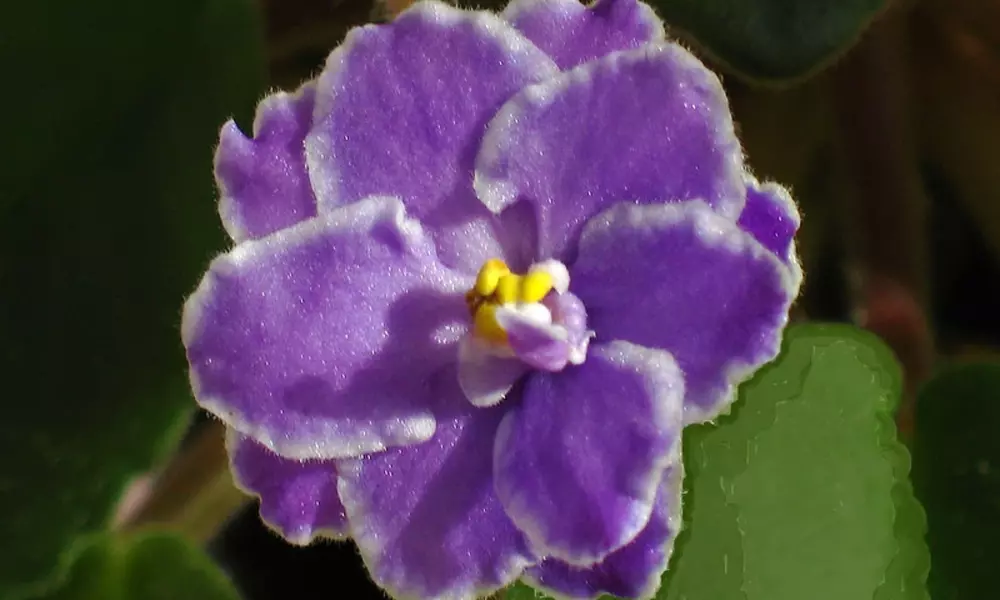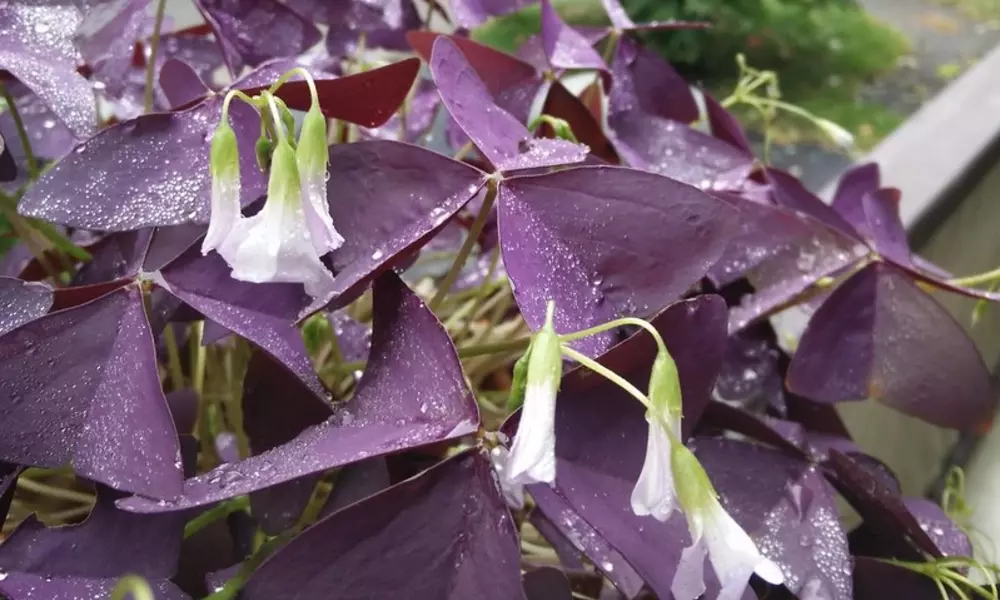Purple houseplants’ care and growth can be challenging, but it can also be incredibly rewarding. Common problems include overwatering and pest infestations, but with the right care, these plants can add a pop of color to any room and improve our health by purifying the air and reducing stress levels.
It’s crucial to provide these plants with well-draining soil, moderate watering, and enough sunlight for them to thrive and be maintained properly. By taking these steps and regularly checking for pests, anyone can enjoy the beauty and benefits of purple houseplants.
Benefits of Purple Houseplants
Purple houseplants have many benefits, both physical and psychological. They are known to purify the air by removing harmful toxins and pollutants, making them ideal for homes and offices.
These plants can also improve mental health by reducing stress levels and promoting relaxation. In addition, purple houseplants can add color and beauty to any living space, making them a popular choice among plant enthusiasts.
Types of Purple Houseplants
There are many types of purple houseplants, each with its unique characteristics and care requirements. Some popular options include:
- African violet
- Persian shield
- Purple passion plant
- Purple waffle plant
- Purple heart plant
- Tradescantia pallida (purple queen)
- Calathea
- Philodendron Prince of Orange

The Ultimate Purple House Plant Care Checklist
| Care Aspect | Description |
|---|---|
| Light | Bright, indirect light |
| Watering | Allow soil to dry slightly before watering |
| Soil | Well-draining potting mix |
| Temperature | Warm, humid conditions |
| Humidity | High humidity preferred |
| Fertilizer | Monthly feeding with a balanced fertilizer |
| Pruning | Regular pruning to promote fuller foliage |
| Propagation | Stem or leaf cuttings can be propagated |
| Common Problems | Root rot, pests, fungal diseases |
| Toxicity | Non-toxic to pets in small quantities, but can cause gastrointestinal upset if ingested in larger amounts |
Remember that every plant is different, so it’s always important to do your research and adjust your care routine accordingly.
Choosing the Right Pot and Soil
When it comes to growing purple houseplants, choosing the right pot and soil is crucial. The pot should have drainage holes to prevent waterlogging, which can lead to root rot.
It is also important to choose a pot that is the right size for the plant. The soil should be well-draining and rich in nutrients. You can use a pre-mixed potting soil or create your own by mixing equal parts of peat moss, perlite, and vermiculite.
Watering and Humidity
Purple houseplants require consistent watering, but it is important not to overwater them. The soil should be allowed to dry out slightly between waterings, and the plant should be watered thoroughly until water drains out of the bottom of the pot.
In terms of humidity, most purple houseplants prefer higher humidity levels. You can increase humidity levels by placing a humidifier nearby or placing the plant on a pebble tray filled with water.
Light Requirements
Most purple houseplants prefer bright, indirect light. Direct sunlight can burn the leaves, while too little light can cause the plant to become leggy and lose its vibrant color. If your plant is not receiving enough light, you can supplement it with artificial lighting.

Fertilizing
Purple houseplants require regular fertilization to thrive. You can use a balanced, water-soluble fertilizer every two weeks during the growing season. During the winter months, you can reduce fertilization to once a month.
Pruning and Propagation
Pruning and propagation are important tasks for maintaining the health and appearance of your purple houseplant. Regular pruning can help prevent leggy growth and promote fuller foliage.
To prune your plant, simply use a pair of clean, sharp scissors or pruning shears to snip off any dead, damaged, or diseased leaves or stems. You can also prune your plant to control its size and shape.
Propagation is the process of creating new plants from existing ones. Most purple houseplants can be propagated through stem or leaf cuttings.
To propagate your plant, simply take a cutting of a healthy stem or leaf and place it in a container filled with moist soil or water. Keep the container in a warm, bright location and mist the cutting regularly until roots and new growth appear.
Common Problems and Solutions
Purple houseplants are generally easy to care for, but they can be susceptible to a few common problems. Some of these problems include:
Root rot: This occurs when the roots of the plant become waterlogged and begin to rot. To prevent root rot, make sure your plant is not sitting in water and that the soil is well-draining.
Pests: Common pests that can affect purple houseplants include spider mites, mealybugs, and scale insects. You can treat these pests with an insecticidal soap or neem oil.
Fungal diseases: Fungal diseases can cause leaf spots and other damage to your plant. To prevent fungal diseases, make sure your plant has good air circulation and avoid getting water on the leaves.
Conclusion
Growing and caring for purple houseplants can be a fun and rewarding experience, but it does require some knowledge and effort. By choosing the right pot and soil, providing adequate light and water, fertilizing regularly, and addressing any problems promptly, you can help your purple houseplant thrive.
FAQs
Q1. Can purple houseplants be grown outdoors?
While some purple houseplants can be grown outdoors in warm, humid climates, most are best suited for indoor growing.
Q2. How often should I water my purple houseplant?
Purple houseplants should be watered when the soil feels dry to the touch. This can vary depending on the plant and the conditions in your home.
Q3. What house plant has purple leaves?
- Purple Heart (Tradescantia pallida)
- Persian Shield (Strobilanthes dyerianus)
- Purple Velvet Plant (Gynura aurantiaca)
- Purple Waffle Plant (Hemigraphis alternate)
- Purple Passion Plant (Gynura sarmentosa)
- Fiddle Leaf Fig (Ficus lyrata) can also have purple-tinged leaves in some varieties.
Q4. What house plant is purple and fuzzy?
The house plant that is purple and fuzzy is called the Purple Velvet Plant (Gynura aurantiaca).
